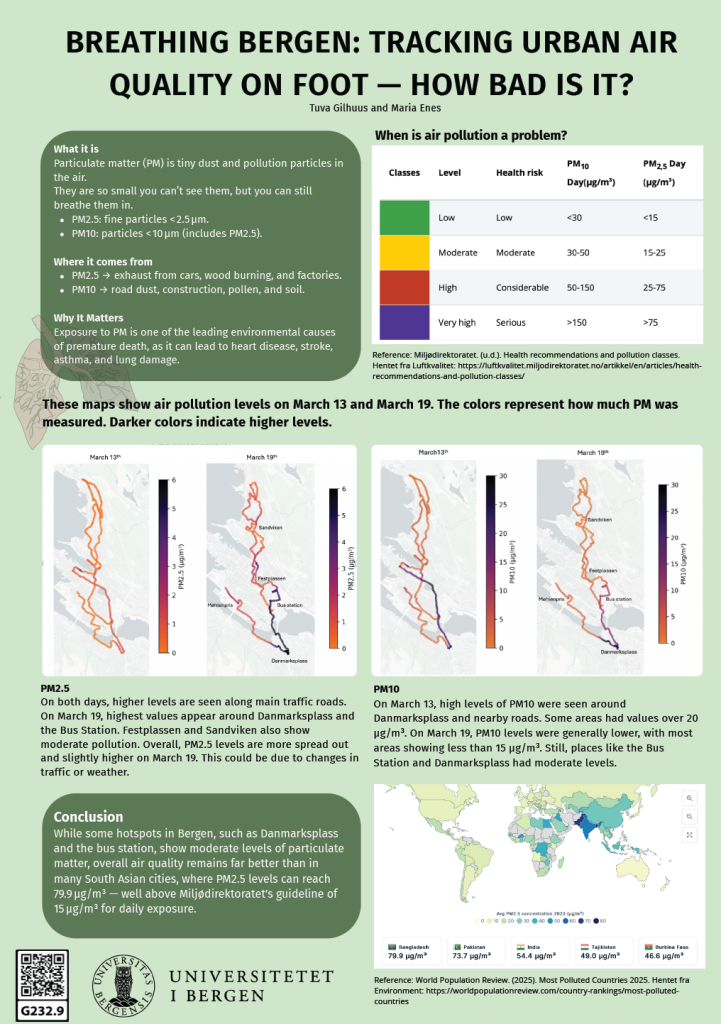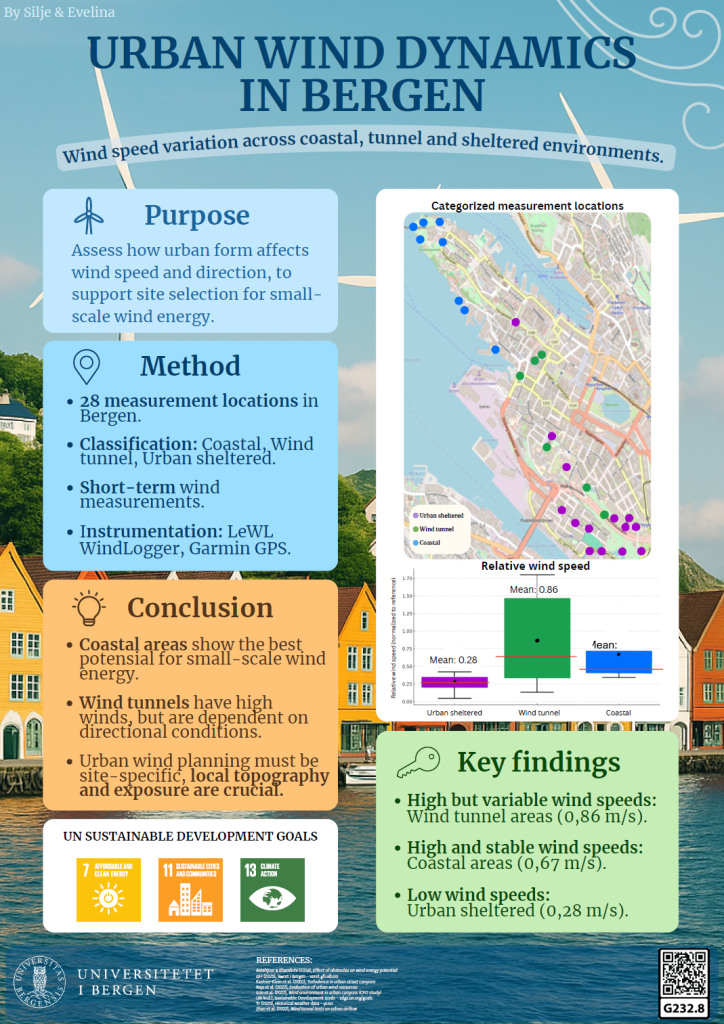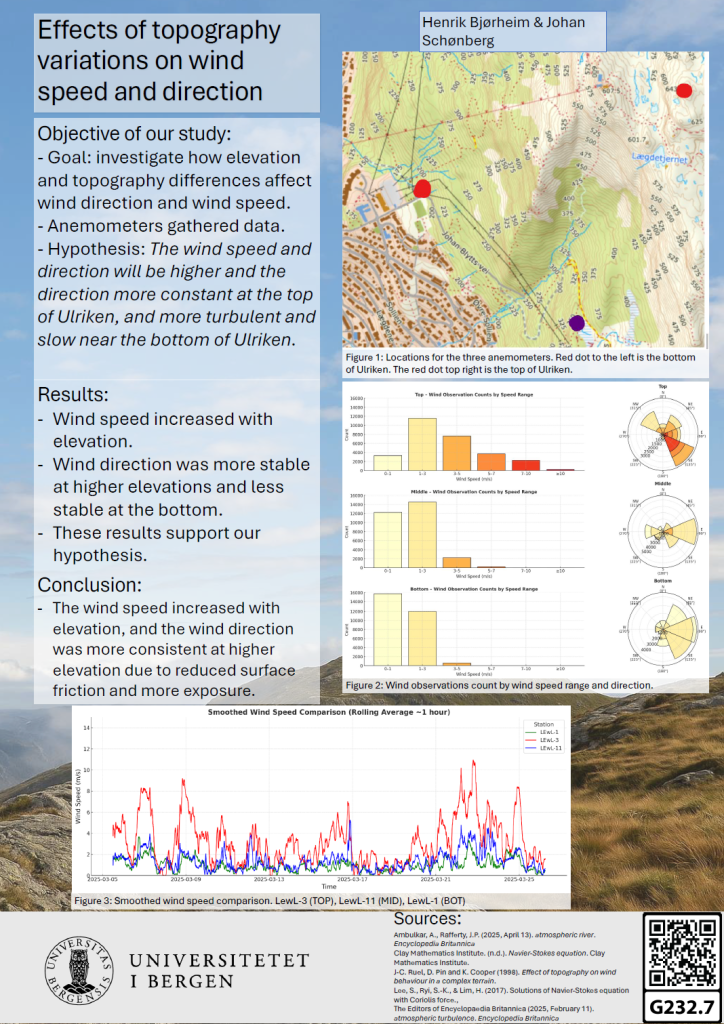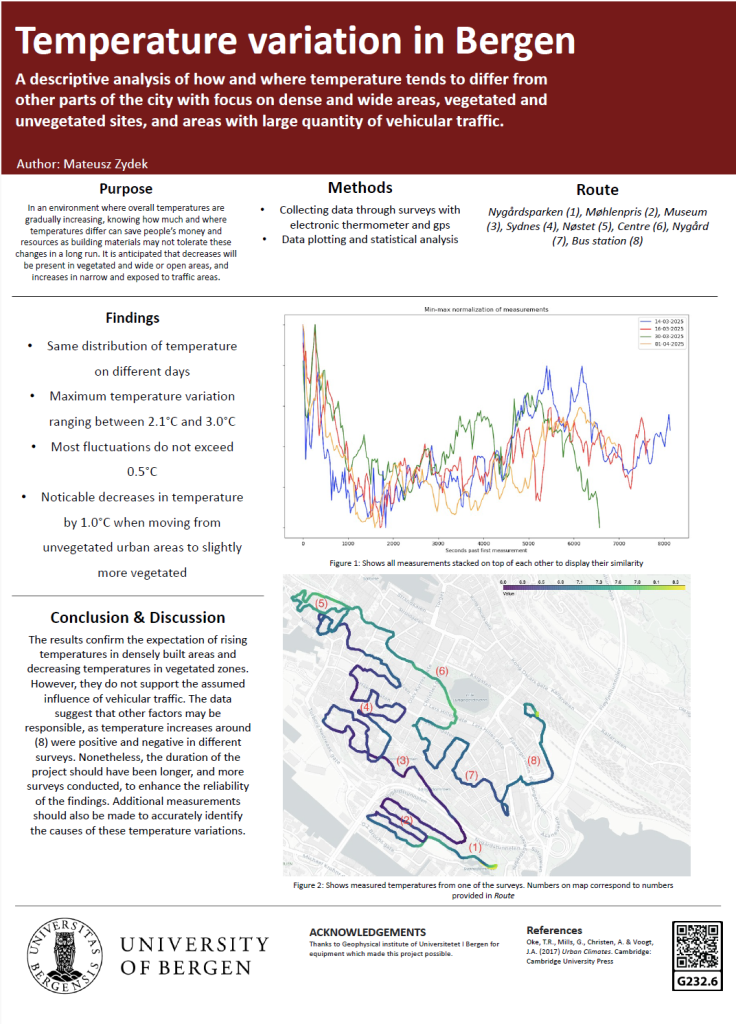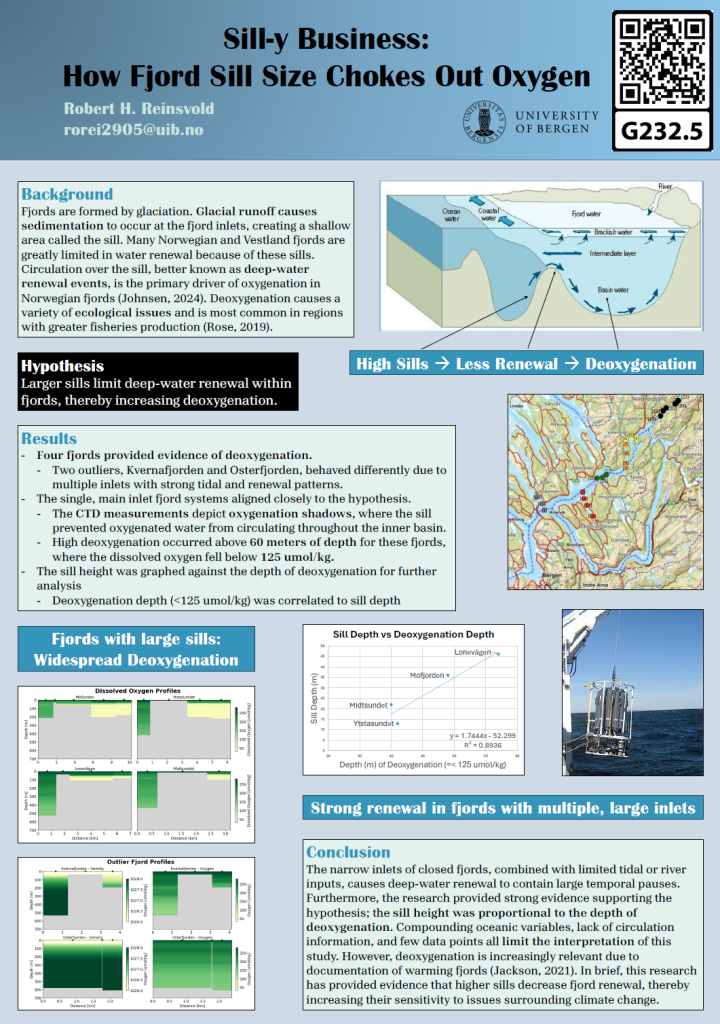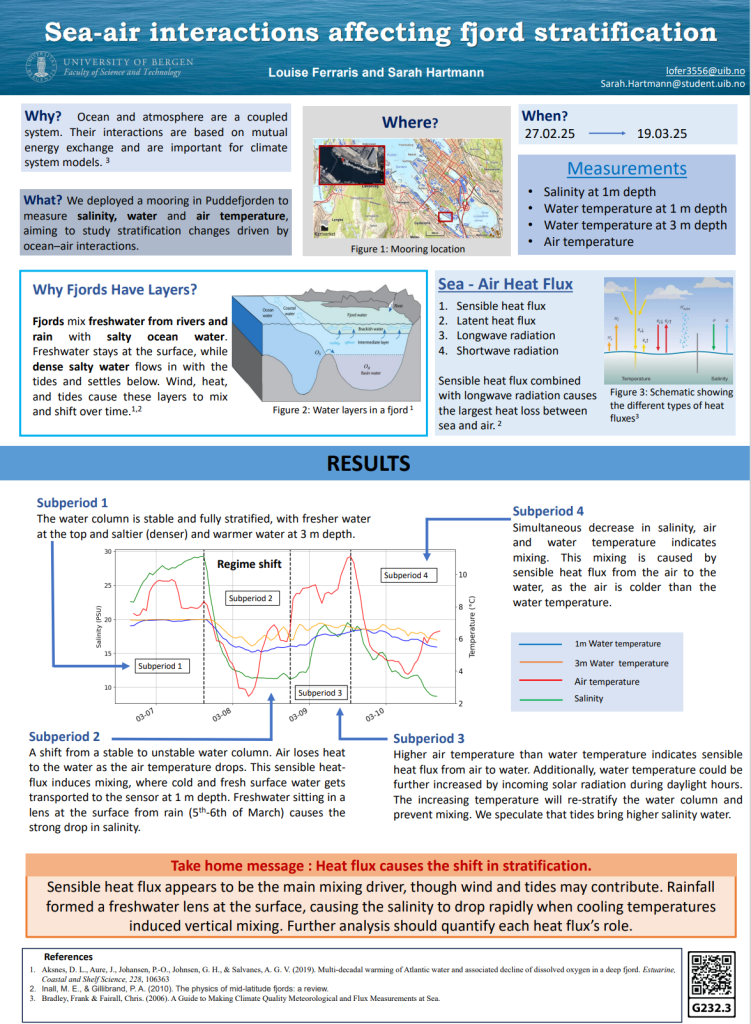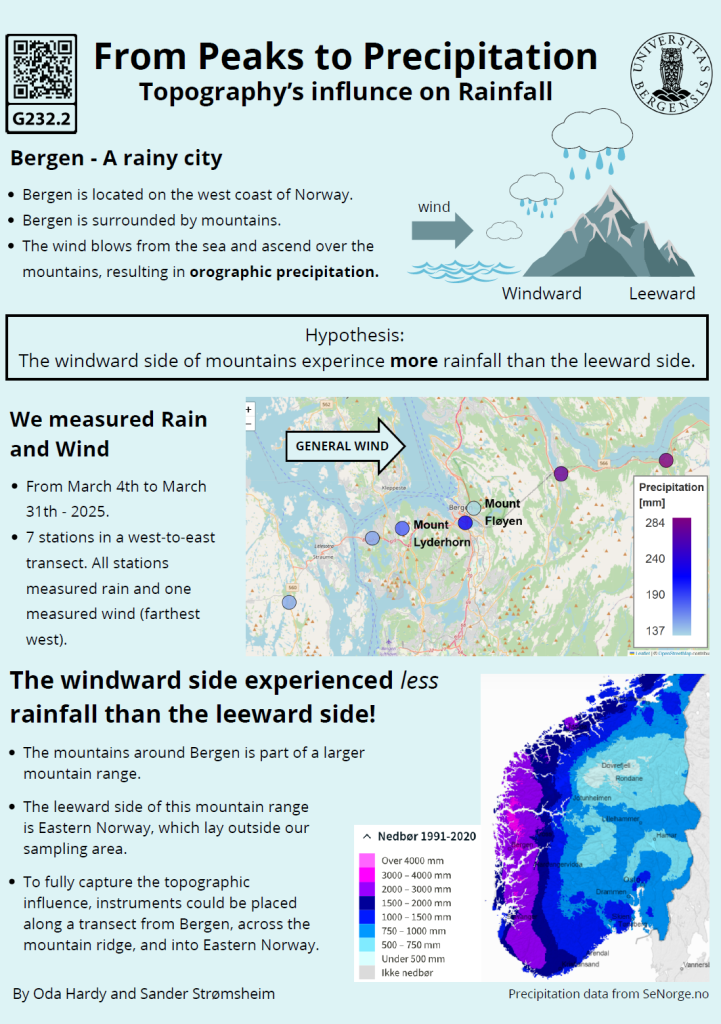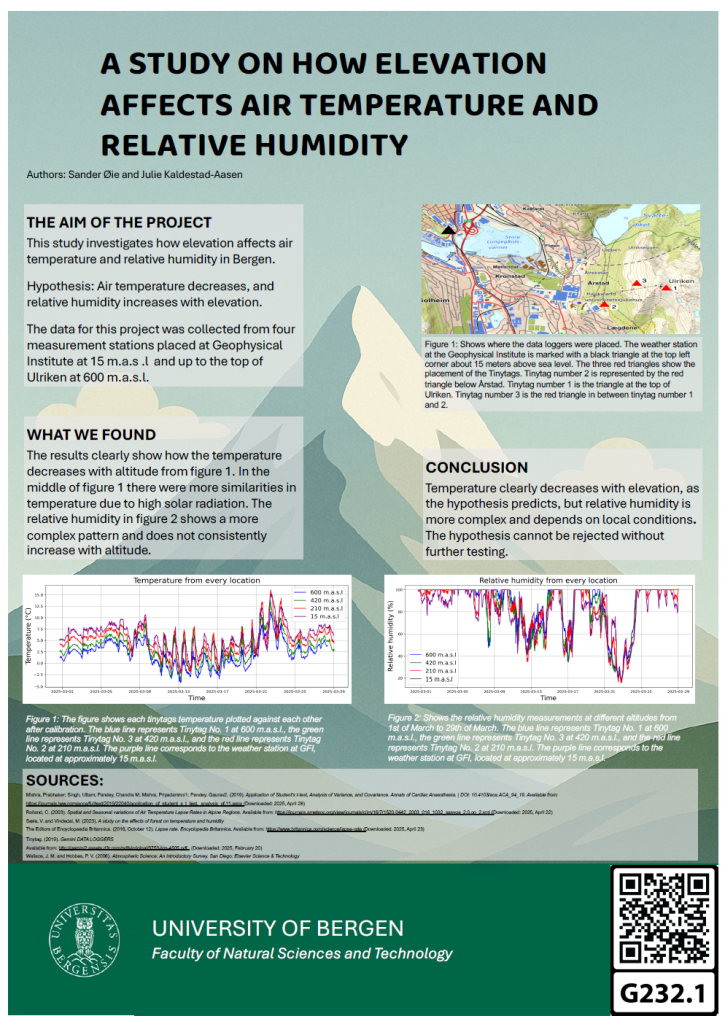Abstract
Particulate matter pollution remains an invisible but serious threat to urban health, particularly in cities influenced by heavy traffic, wood burning, and restrictive topography. This project maps air quality across Bergen’s city center using portable sensors, aiming to identify hidden pollution hotspots and understand contributing factors. Findings show that while central areas such as Festplassen, the bus station, and Danmarksplass exhibit higher particulate concentrations during stable weather conditions, Bergen’s overall air quality remains relatively low compared to, for example, Oslo, and significantly better than cities in regions like South Asia. These results highlight the importance of localized, real-world air quality measurements to support healthier and more sustainable urban environments.

